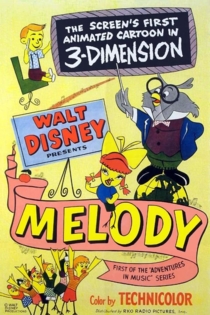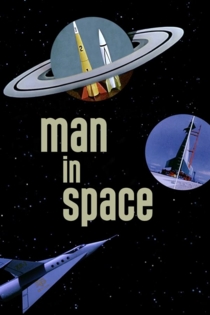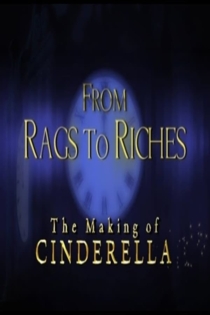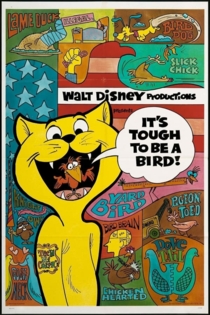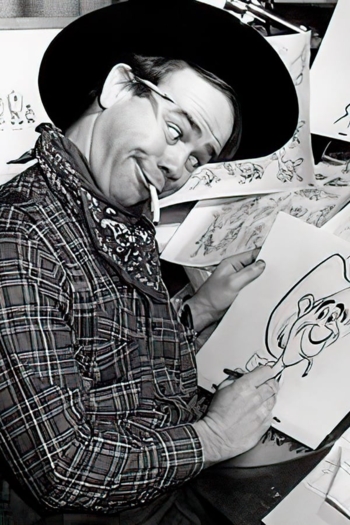
Ward Kimball
1914 - 2002Man and the Moon
Ward Kimball
Wernher von Braun
The moon is the subject here. Man's fascination with the moon (via animation) is presented, as is the moon's usage in popular culture (from Shakespeare to nursery rhymes to popular songs). Also, superstitions and suppositions associated with the moon is presented. Then scientific research on the moon is shown, followed by plans for (and then a simulation of) an actual trip around the moon.
Man and the Moon
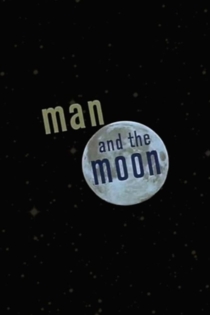
Disneyland '59
Hamilton Luske, Marshall Diskin
Eddie Albert, Danny Alguire
Walt Disney and Art Linkletter co-host a live celebration of Disneyland's 1959 expansion that consisted of the debuts of Matterhorn Bobsleds, the Disneyland-Alweg Monorail, and the Submarine Voyage, a project so massive that it was called "The Second Opening of Disneyland". Highlights include a mammoth, star-studded parade and the official launching of the Disneyland submarines by U.S. Navy officers. Among the guests are then-Vice-President Richard Nixon and family, Clint Eastwood, and Meredith Willson, who leads the Disneyland band in his own "76 Trombones." Sponsored by Kodak, the commercial spokespersons include Ozzie and Harriet Nelson.
Disneyland '59
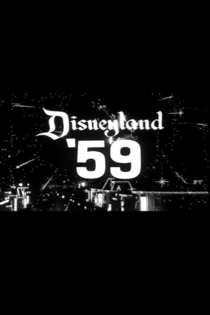
Toot, Whistle, Plunk and Boom
Ward Kimball, Charles A. Nichols
Bill Thompson, Loulie Jean Norman
In this short subject (which mostly represents a departure from Disney's traditional approach to animation), a stuffy owl teacher lectures his feathered flock on the origins of Western musical instruments. Starting with cavepeople, whose crude implements could only "toot, whistle, plunk and boom," the owl explains how these beginnings led to the development of the four basic types of Western musical instruments: brass, woodwinds, strings, and percussion.
Toot, Whistle, Plunk and Boom
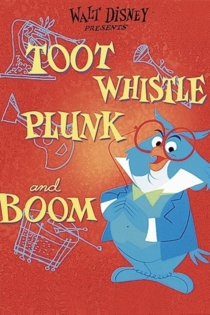
Walt Disney's Where Do the Stories Come From?
Jack Hannah, Charles A. Nichols
Walt Disney, Kirk Douglas
Walt answers the often-asked question of just where the stories for his studio's cartoons come from, which is from practically anywhere.
Walt Disney's Where Do the Stories Come From?

One Hour in Wonderland
Richard Wallace
Edgar Bergen, Walt Disney
Airing on Christmas Day, 1950, this holiday special was the first Disney TV production. It features Edgar Bergen with Charlie McCarthy and Mortimer Snerd at Walt Disney's Christmas party. The show includes clips of movies and animated shorts and the first appearance of the Fire House Five Plus Two jazz band.
One Hour in Wonderland
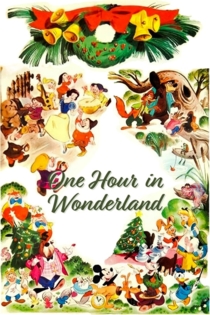
Dad... Can I Borrow the Car?
Ward Kimball
Kurt Russell, Spencer Quinn
A live-action short, using many avant-garde film techniques, that looks at American car culture in the late 1960s. The main section deals with the many trials and obstacles a teenager must face on the path to being able to drive. Surviving the driver's education class is only the first step, as the teenager must then pass his driving test, and then finally get permission to borrow the family car.
Dad... Can I Borrow the Car?

The Reluctant Dragon
Hamilton Luske, Alfred L. Werker
Robert Benchley, Frances Gifford
Humorist Robert Benchley attempts to find Walt Disney to ask him to adapt a short story about a gentle dragon who would rather recite poetry than be ferocious. Along the way, he is given a tour of Walt Disney Studios, and learns about the animation process.
The Reluctant Dragon
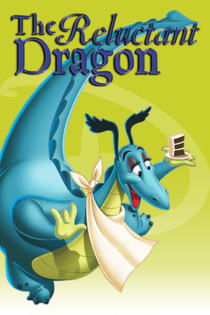
The Nifty Nineties
Riley Thomson
Walt Disney, Thelma Boardman
Mickey courts Minnie in the Gay Nineties: they take in a vaudeville show and go for a drive in his horseless carriage, to the strains of "While Strolling Through the Park" and "In the Good Old Summertime". Goofy rides by on a penny-farthing bicycle, and the whole Duck family rides by on a bicycle built for five.
The Nifty Nineties
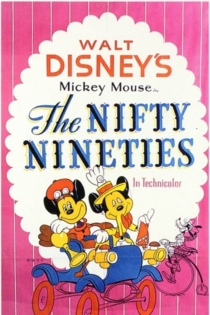
Melody
Ward Kimball, Charles A. Nichols
Bill Thompson, Harry Stanton
An owl teaches his class full of birds about melody. It's all around in nature. Only birds and man can sing; man "sings" even when he speaks. We see a quick survey of the stages of life, as captured by songs: the alphabet song for primary school, Here Comes the Bride, The Old Gray Mare, etc. Some inspirations for song are outlined in song: love, sailing, trains, the West, motherhood, etc., but "we never sing about brains." Finally, an example of how a simple melody can be expanded into a symphony: an elaborate version of the simple tune that opened the lesson
Melody
